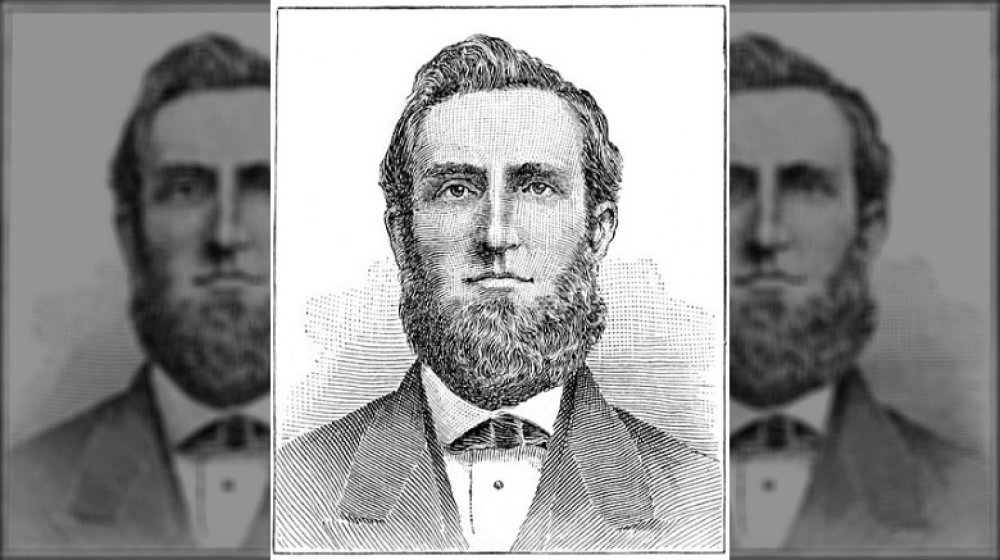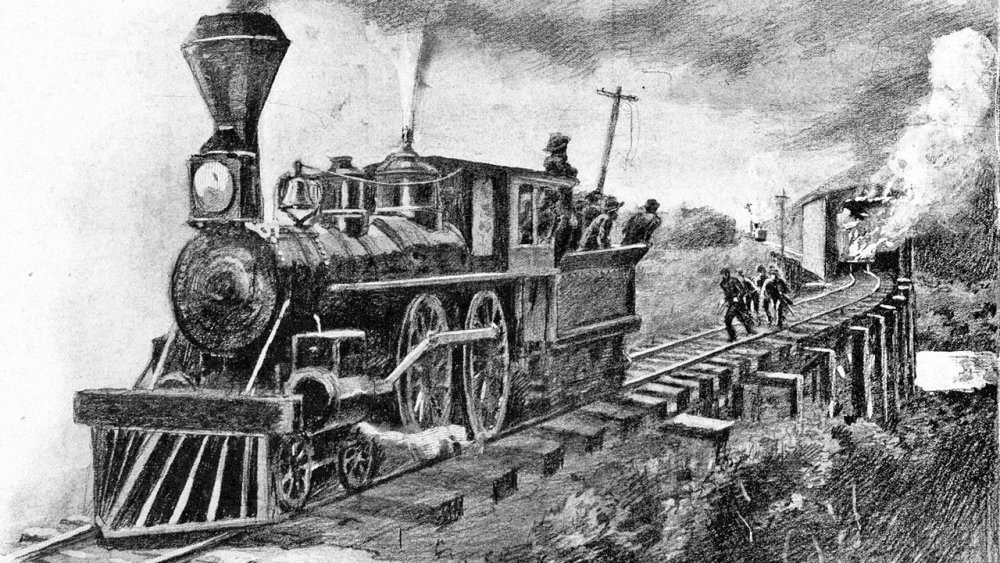The Amazing True Story Of The Great Locomotive Chase
It's one of those moments in espionage history when someone probably said, "That plan is so crazy, it just might work." Which is fine for movies, but in real life, generally, if the plan is that crazy, it really won't work. Case in point: the incident now known as The Great Locomotive Chase. It was 1862, the second year of the Civil War. Armies and their supplies have to move using feet, horses, or wagons. But in those days, if you had a lot to move, and especially if you were in a hurry, it meant trains. Cripple your enemy's rail network and you had a significant dent in their ability to wage war effectively. That was the general idea behind James J. Andrews' plan. Bear in mind that Andrews, who remains something of a mystery to this day, was not an actual spy or professional soldier, but a concerned civilian. He brought his plan to Union leadership and was given a corps of 23 volunteer soldiers. The plan: infiltrate Southern lines, meet in Chattanooga, board the same train, and commandeer it. They would travel north, burning essential railroad bridges, cutting telegraph lines, and destroying track as they went.
A plan so crazy that ... it was crazy
They managed to steal a wood-burning train, named The General – yes, trains were named in those days — and took off. The train's conductor, a man named William Fuller, took it quite personally and set off in pursuit, at first at a dead run — "I ran two-and-a-half miles, and when I say run, I don't mean trot, gallop, or pace. I mean run," he later recalled. He and two companions pursued further in a kind of hand car. They finally reached a train, The Texas, and set off in earnest. For their part, the raiders made it about a hundred miles before running out of fuel. They abandoned the train but were quickly rounded up. Andrews and seven others were hanged as spies. Eight of the remaining Union train saboteurs managed to escape prison in Atlanta; the remaining six returned home as part of a prisoner exchange. All of the surviving members of Andrews' group were awarded the Congressional Medal of Honor for their efforts — the first soldiers to receive that medal. Buster Keaton's silent comic masterpiece The General tells the story from William Fuller's side; Disney gave us The Great Locomotive Chase, starring Fess Parker — of Davy Crockett fame — as James Andrews.

